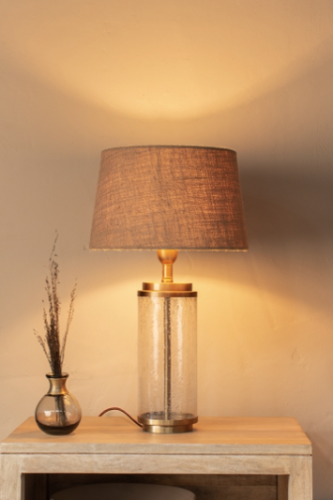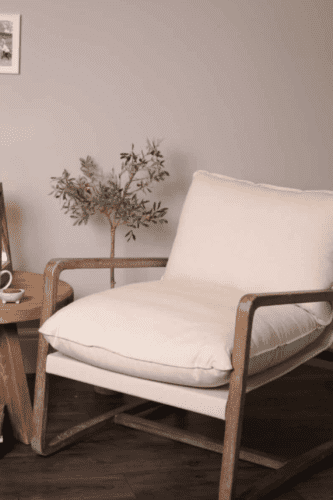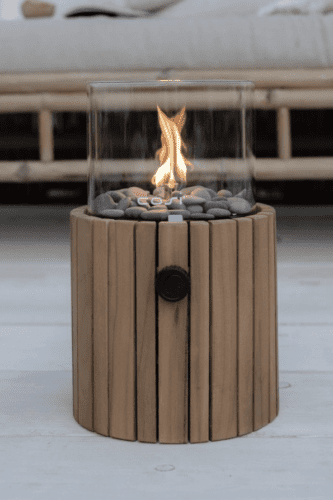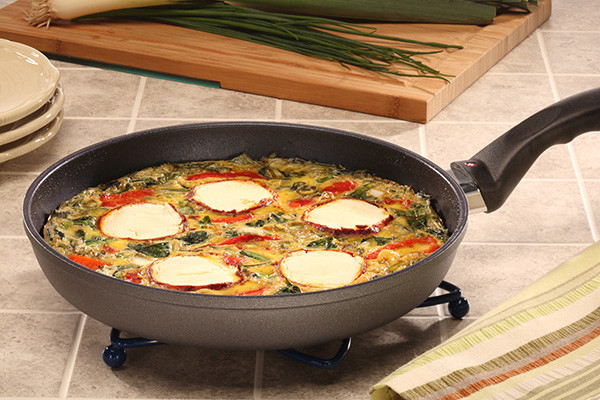A decent set of non-stick pans in your kitchen can make all the difference in the world to your cooking. Not only does a good quality, well looked after pan give better results, it also makes cooking (and cleaning) far more enjoyable in my opinion.
A good non-stick pan is one of the staple ingredients for a complete kitchen and a happy chef. Whether you want to invest in a top of the range brand that will last a lifetime, such as Swiss Diamond, or if you prefer to keep costs down but prolong the life of a lower or mid-range brand, there are a few tricks and tips that will keep your pans in tip top shape, and ensure they last you as long as possible.
When you first get your non-stick pan home, you will want to give it a wash with some warm soapy water before use. Do not use any stronger cleaners, as they are unnecessary and far too harsh. Some manufacturers advise “seasoning” or “conditioning” a non-stick pan before use by coating the surface lightly with oil, baking it, and wiping it off. This will help the non-stick quality of a pan, although some of the superior non-stick brands may not consider this a necessary step, so check the manufacturers guidelines if you are unsure.
Whilst cooking with non-stick pans, it is often advised that you do not use metal utensils at all, as they will very quickly damage a lot of non-stick coatings. This is slightly different for certain brands such as Swiss Diamond, as their pans are made with an ultra-strong diamond coating, which can withstand a lot more than most non-stick coatings. They are in fact metal utensil safe. However, it is still not advised to use knives, forks or other particularly sharp metal items, even in top quality pans such as these, because eventually this will take its toll, and why cause wear and tear if you don’t really have to? Plastic, wooden, silicone, rubber or nylon utensils will definitely prolong the life of your pan, whatever the standard of non-stick coating, so it is always best to bear this in mind, even if you do have a pan that is tough enough to withstand metal.
The chart below gives an indication of the lifespan of your non-stick coating. Swiss Diamond tested a number of different types of non-stick coating by rubbing them with sandpaper, to see how many strokes it took to remove the non-stick layer. The thought of rubbing a non-stick pan with sandpaper actually goes right through me, but we’re glad someone did it so that we can see how long our pans will last!
Another tip to protect your non-stick coating is to not bake it in the oven at more than about 450°F. Again, there are certain top quality non-stick pans, that will withstand higher temperatures, but it is rare that you would need to cook at a higher temperature than this anyway. Intense heat will eventually damage the finish, so do avoid this wherever possible. Non-stick pans often produce better results at lower temperatures than ordinary pans anyway, so play about to find the best temperature for your cooking and you will likely find you do not need particularly high heat.
Once done with your pan, let it cool before cleaning it. Submerging a hot pan in cold water can warp and ruin the non-stick coating. As can abrasive cleaners! Never use an abrasive cleaner, bleach or chemicals to clean your pan. On some occasions, simply a sponge or dishcloth wiped over the surface will suffice. Otherwise, warm soapy water and a soft sponge or brush. Do not use metal scouring pads! Also, do not ever put your non-stick pans in the dishwasher. The high temperatures can eventually damage the non-stick coating and void the warranty.
Do take care to clean your pans properly and thoroughly. Food residue left on a non-stick pan will eventually be baked on and will become carbonized. Once this happens, it will be very difficult to see or remove the residue. It is sometimes a good idea to wash each pan twice over to ensure you have removed any trace of food and oil or butter. This way, it will be as good as new each time you cook with it.
Lastly, think about how you store your pans. Stacking them in a cupboard may seem like the easy option, but this can easily cause scratching over time. It is best to hang them up somewhere or use some sort of cloth or soft fabric in between each pan if stacking really is the only option.
It may seem like a lot of bother, but simply treating your non-stick cookware with love and respect will give you much more use, better results, easier cleaning in the long run, and will ensure your warranty is intact should something unavoidable happen to your precious pans.









